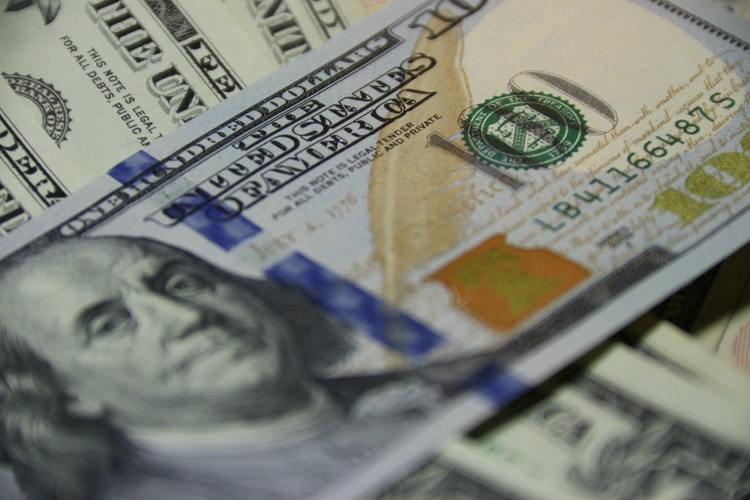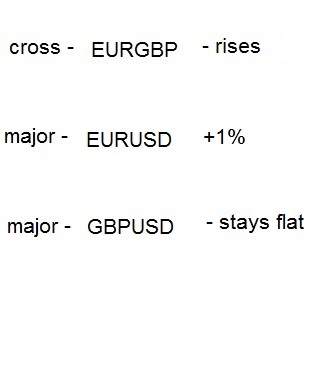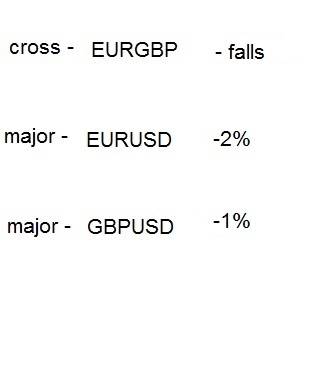Explaining the Forex Dashboard
One of the criteria when choosing a broker is its offering. What products exist and what are the conditions to trade them.
The total number of financial products offered for trading make up the Forex dashboard. However, the notion is somewhat relative in Forex trading.
Stiff competition made brokers go the extra mile. Besides the classic currency pairs, brokers were “forced” to come up with new products.
As such, today’s Forex dashboard comprises of currencies as well as:
- CFD’s. Contracts for Difference or derivative products that allow trading financial instruments otherwise inaccessible to the retail trader (e.g., stock indexes).
- Commodities. Oil, gold, and silver fluctuate against the U.S. dollar, so Forex traders assimilate them as regular currency pairs.
And the list can go on, depending on the size of the brokerage house and the interest from its clients. In any case, the Forex dashboard reflects the market.

The U.S. Dollar as the World’s Reserve Currency
The dollar plays a vital role in the financial system as we know it. Since the Bretton Woods conference, the nations around the world accepted the dominant position of the dollar.
It wasn’t much of an option for most countries. With Europe ravaged by war and Japan on its knees, the only super-power that didn’t need massive infrastructure investments was the U.S.
Therefore, there wasn’t much opposition to the suggestion of pegging the dollar to gold. Back to the gold standard, the United States Dollar became as good as gold.
But that ended abruptly with the Nixon shock in 1970’s. Because of the inability to finance the massive deficit, the United States decided to scrap the gold standard.
What happened is little short of amazing. Instead of being in shock, the world accepted the dollar as a fiat currency (effectively, paper money) and trusted the Fed would protect its interests.
Fast forward a few decades, and the dollar stands as the cornerstone of the financial system. And, at the very heart of every Forex dashboard.
Majors and Crosses in Forex Trading
The starting point for understanding the Forex dashboard is the USD. As a rule of thumb, all currency pairs that have the American dollar in their componence, have the name “majors.” The rest are known as crosses.
As such, understanding majors and crosses in Forex trading, means understanding the Forex dashboard.
Moreover, for every cross pair, two majors exist. For example, think of the EURGBP pair.
Because the USD doesn’t appear in its componence, that’s a cross. What are the two major pairs that influence this cross?
To find out, just add the USD to the other two currencies. The resulting two pairs are EURUSD and GBPUSD.
A simple trick like this applies to the entire Forex dashboard. As such, all the currency pairs listed in a Forex trading account, belong to two categories: majors and crosses.
This is a vital point to understand before buying and selling a pair. The reason comes from the fact that the two categories move for different reasons.
Naturally, the USD moves majors. Whenever there’s a USD news or a Fed decision, the dollar fluctuates. As a result, all major pairs will move too.
However, they’ll move in the same direction, because they have the USD in their componence. A process known as overtrading happens when traders open multiple trades on major pairs before an important USD event.
It is like opening all the trades on a single major. As a side note, overtrading is one of the biggest enemies to a trading account. A simple thing like understanding the difference between a major and a cross helps avoid overtrading
How Majors and Crosses Move
Majors and crosses move in threesomes. As explained earlier, for every cross, two majors exist.
Hence, the USD is in the driver’s seat. For exemplification, let’s use the same EURGBP, EURUSD and GBPUSD example.
Various scenarios automatically influence the levels in currency pairs. It makes it quite interesting because all traders need to address is two pairs, and they can forecast the third one.
Many traders use technical analysis to forecast future price. If the forecast points to a higher EURUSD but a GBPUSD that consolidates, a profitable Forex trading strategy would be to buy EURGBP.
Here’s the explanation:

In other words, if the majors move at the end of the day the way they did in the picture above, the EURGBP gained too.


Or, if the two majors move the same distance, percentage-wise, there is no way the cross will travel. The three examples showed here represent only some of the possibilities that exist.
What matters is understanding that the Forex dashboard is interconnected, and Forex trading becomes easier when traders realize the way it functions.
Correlations to Consider
Besides the interdependence explained above, some currency pairs move in a tight relationship with each other. However, before continuing, we must add that the correlation degree changes in time, depending on various factors like the interest rate level and overall monetary policy.
When the USD moves, for whatever the reason, all the majors move in the same direction. The percentages, however, differ.
Providing no other factor exists, the dollar sits in the driver’s seat. As such, the biggest correlation is the one between the USD pairs.
Of course, one can buy the EURUSD and sell the GBPUSD at the same time, but the reason must be something other than a USD one. For example, change in the Bank of England monetary policy might cause the GBP to fall across the board. Yet, it won’t be a dollar move.
While not that stringent anymore, the AUD and CAD used to enjoy an inverse correlation. In other words, when one rose, the other one fell.
The explanation came from the fact that both are “commodity” currencies. Hence, when the commodity market swings, the two currencies swing too.
Terminology Used
Currencies have a nickname in the trading world. Traders use a jargon, either referring to the currency or a currency pair:
- EURUSD – fiber
- GBPUSD – cable
- AUD – Aussie dollar, AUDUSD - the Aussie pair
- NZD – Kiwi dollar, NZDUSD - the Kiwi pair
- CAD – Loonie, USDCAD - the Loonie pair
- CHF – Swissy, USDCHF – Swissy pair
As you can see, most of the critical currencies appear here, with only the JPY missing from the picture.
In Forex trading, not only do traders use special language, but central bankers do too. Because the trading algorithms dominate the price action, central bankers choose their words carefully, signaling future changes in monetary policy with single words. (e.g., vigilant, during the ECB Trichet’s presidency).
Conclusion
The Forex dashboard may seem flashy and unimportant, but it contains plenty of information. In Forex trading, the retail trader has slim chances to survive, if not adequately prepared.
This article aimed to explain how currencies appear on the dashboard and why they are paired the way they are. Moreover, it looked at the terminology used and how the correlations function, both between two majors and one cross, and between different currencies.
But the central piece is the USD. The most powerful (not the most expensive!) currency on earth belongs to the biggest economy in the world.
If the USD remains the dominant currency for international trade, the Forex dashboard won’t change much.

All in all, the Forex dashboard has more than currencies. Expect it to change in time, together with the financial markets. Who would have thought crypto-currencies would be part of a Forex dashboard a few years ago? And yet, here they are now


